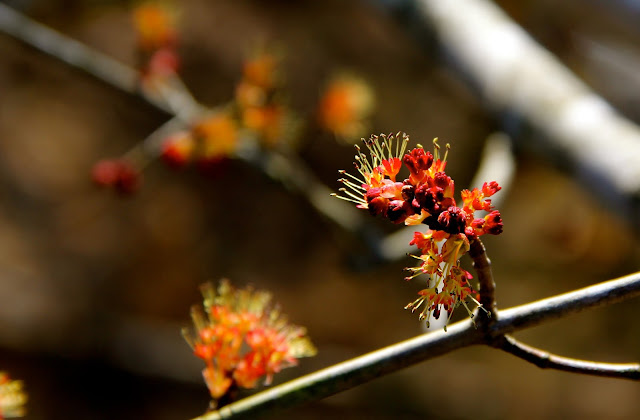For months, the limbs are bare.
Red-shouldered hawk sticks to the noonday shadows near the trunk of the gnarly oak,
lest its aquiline silhouette scatter the foraging squirrels below.
Nearby, however, maple breaks ranks with her bare-branched kin;
at long last, a tree abloom!
Weeks before the cone-bearers release their clouds of golden dust,
their deciduous neighbors discreetly erupt in a silent explosion of reds and yellows.
These intricate organs, attended largely by equally inconspicuous pollinators,
will bear an abundance of winged seeds a few weeks hence;
for now, however,
they're content to color the leafless shore with their subtle hues,
their true splendor lost on all but the most careful and curious watchers,
here at the brink of spring...
Farther along the way, a favorite patch of wild chickasaw plums prepares the way for a late May feast at nature's table,
abundant tiny blossoms bursting forth,
each a potential plum,
soon to be plucked by other clever inhabitants of this sandy spot just beyond the shade of the long leaf pines,
but simply eye candy for now,
a lovely libation for the keen-eyed few who pause to drink them in...
The vines have awakened as well,
the woody cords and weathered leaves of native Carolina jessamine,
Gelsemium sempervirens,
now adorned by spectacular golden trumpets,
declaring unequivocally the advent of spring,
bearing priceless gifts,
free for all who will but pause to partake of the bounty...


























